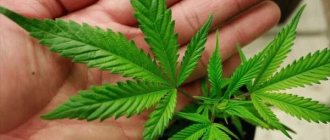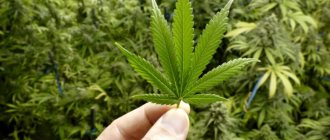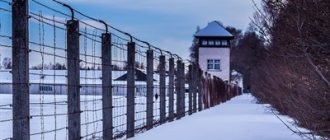Growing cannabis at home is practiced today by most European growers, as well as commercial seed producers. An important advantage of indoor growing is the ability to create the right conditions for the growth of bushes and completely control them. This makes the results predictable and allows you to unlock 100% of the variety’s yield potential. In this article we will answer the question of how to grow hemp at home and get a high-quality, strong and large harvest.
Preparing to grow marijuana indoors
The initial stage of preparation for growing cannabis at home is choosing a place to grow. The simplest and least expensive options are growing on an insulated balcony or on a windowsill. In this case, there is no need to allocate a special space for growing, buy equipment and lamps, because the plants will receive most of the light through the window.
But this method of home growing has its drawbacks:
- Most often, there is not enough natural sun, and the grower still has to use additional lighting lamps.
- Bushes on a balcony or windowsill attract the gaze of curious neighbors, which is unacceptable for many growers.
One effective home growing option is to grow cannabis soilless in hydroponic setups. With this method, all substances important for the development of the bushes are obtained directly from the nutrient solution. Subject to the rules and growing conditions, the hydroponic method allows you to get large yields. But this method requires experience and special equipment. Mistakes here are unforgivable.
Treatment prices:
| Service | Price, rub) |
| Types of therapies | |
| Standard detoxification therapy | 3 500 ₽ |
| Double Detox Therapy | 6 000 ₽ |
| Enhanced Detoxification Therapy | 7 500 ₽ |
| Maximum detoxification therapy | 9 500 ₽ |
| Quick sobering up at home | 7 500 ₽ |
| Hospital at home 1 day | 22 000 ₽ |
| Advanced hospitalization | 15 000 ₽ |
| Treatment in hospital | |
| Accommodation | |
| Economy chamber (6 beds) | 2 000 ₽ |
| Standard room (4 beds) | 3 000 ₽ |
| Increased comfort (2 seater) | 5 500 ₽ |
| VIP chamber (1 person) | 12 500 ₽ |
| Individual post 24/7 | 5 000 ₽ |
| Medical and social rehabilitation 21 days | 140 000 ₽ |
| Service | Price, rub) |
| Initial consultation with a narcologist | for free |
| Consultation with a psychologist | 3 000 ₽ |
| Psychiatrist consultation | 5 000 ₽ |
| Coding at home Torpedo | 7 500 ₽ |
| Express output and encoding (doublet) | 13 500 ₽ |
| Coding using the Dovzhenko method | 12 000 ₽ |
| Hypnosis classic session | 13 000 ₽ |
| Ericksonian hypnosis session (NLP) | 8 000 ₽ |
| Coding method Torpedo | 5 500 ₽ |
| Double block | 8 000 ₽ |
| Esperal injection for 1 year | 9 900 ₽ |
| Tetlong for 3 months | 10 500 ₽ |
| Esperal gel for 1 year | 15 000 ₽ |
| Selincro course of therapy | 12 500 ₽ |
| Implantation of Disulfiram for 1 year | 18 000 ₽ |
| Vivitrol injection for 1 month | 26 000 ₽ |
| Naltrexone stitching for 3 months | 35 000 ₽ |
| Neuroimplantation Prodetoxon for 6 months | 47 500 ₽ |
| Narcopsychotherapy session | 50 000 ₽ |
| Neutralization of encoding | specify |
| Psychodiagnostics / pathological diagnostics | 7 500 ₽ |
| Psychotherapy session | 5 000 ₽ |
| Family psychotherapy | 6 000 ₽ |
| Outpatient rehabilitation in Moscow | 33 000 ₽ |
Expand
In some countries they are completely legalized, while in others the storage and use of only small doses is allowed. But in most states, cannabis is prohibited for sale because it causes addiction and is considered a direct path to switching to heavier psychoactive substances.
Growing cannabis in a grow box
For soil-based home growing, the best option is a growbox - a special box for growing marijuana at home. Lamps, thermoregulation systems, supply and exhaust ventilation and other equipment are installed inside the growbox. This creates a special microclimate favorable for plants.
You can buy a ready-made grow box with equipment for growing marijuana at home. These options are convenient, but quite expensive. It is much more profitable and cheaper to assemble a growbox yourself.
It is important to pay attention to the following points:
- Design size. It will depend on the available space in the room and the number of plants. In a 1 m² grow box, it is best to grow 3-4 bushes. The height of the grow box will depend on the cannabis variety. To make the correct calculation, add to the estimated height of the bushes the margin for the distance between the lamps and the top of the hemp. This value will depend on the lamps used - their type and power.
- Materials. When stealth growing, you can make a small growbox from an old microwave or computer case. These mini-boxes are designed for one plant. For a full-fledged grow box, a kitchen cabinet or a used refrigerator is suitable. If there is nothing suitable, you can cut out a growbox from fiberboard.
- Tightness . This is an important condition for successful growing. Light should not penetrate inside or out, and microclimate indicators should remain stable. The growbox must have airtight joints and a tightly closing door. The seams of the structure must be sealed with rubber gaskets or silicone sealant.
- Internal coating. It should reflect light and serve as insulation. If the air temperature in the apartment does not drop below +20ºС, then it is not necessary to insulate the growbox. As a reflective material, you can use foil, penofol (it also plays the role of insulation), glossy white paint.
- Fire safety. This point is important, since the grow box uses a lot of electrical appliances and regularly waters the cannabis. It is necessary that all wires be carefully insulated and located further from irrigation zones. For lighting and ventilation, it is better to install a new, reliable cable with an automatic shutdown system.
- Ventilation. The most budget option is to make a hole at the top of the grow box, where you can then install a hood with a carbon filter. This will ensure the air flows out of the box. The inlet hole should be made at the base of the grow box.
Growing Tools
The first thing you will need is a place to grow. We recommend purchasing a decent grow box for growing plants. They are inexpensive, suitable for growing, and can be quickly set up and taken down by one person. Some grow boxes come in a kit that includes all sorts of sophisticated equipment. The best thing to do with your tent is to buy only what you need and learn how to grow plants without investing too much.
First, you'll need lighting. You can use LED (light emitting diode) and CFL (compact fluorescent lamp) systems. Invest in a decent timer to control your lighting.
You'll also need an exhaust fan and an activated carbon filter to eliminate odors. Be sure to purchase one that is rated for the size of your tent, with the proper duct size. An overhead circulation fan will keep the air moving and prevent it from stagnating. A thermometer/hygrometer is also necessary to monitor temperature and humidity.
If you do not have access to marijuana seeds in your city, you should order from an online store.
A simple loose and airy soil mixture in 15-20 liter buckets is great for beginners and is much more gentle than, for example, a hydroponic system or garden soil. Be sure to make holes in the bottom of the buckets and use containers/stands under them to prevent liquid spillage (when watering or feeding). You will need to purchase nutrients to feed the plants as they grow, as well as a watering can.
Home Grow Equipment
Fans
To create a favorable microclimate in the grow room, you need to take care of supply and exhaust ventilation. The frequency of updating the air inside depends on the type of lamps, their power and the size of the grow box. When using HPS, which produces strong heat, the air in a 1 m² grow box should be completely renewed every 30-40 seconds. If ESL or LED panels are used, the air exchange rate in a 1 m² grow box should be 1-2 minutes. If the box area is larger, then air renewal may be carried out less frequently.
In small grow rooms, fresh air comes from outside through an opening at the bottom of the grow room. You can also use a supply fan, which is installed in this lower hole. When heated, the air rises upward and is discharged through an exhaust duct fan. If powerful HPS lamps are used, it is a good idea to install a separate fan at the level of the lamp.
Carbon filter
This equipment makes it possible to neutralize the strong smell of cannabis during flowering. The filter is installed above the lamps, but below the exhaust fan. The air, saturated with molecules of aromatic terpenes, passes through the filter and enters the exhaust fan already neutral, since activated carbon perfectly absorbs all odors. You can skip the carbon filter if you choose a low-smelling variety.
Lamps
- DNAT. One of the most common options, which are characterized by high light intensity and durability. Sodium lamps can be used both in veg and during flowering, as they emit both blue and red light spectra. To illuminate 1-2 bushes, you can take one HPS lamp with a power of 250 W; for 3-4 bushes, a 400 W lamp is suitable. These lamps generate a lot of heat, so special attention should be paid to ventilation. To avoid light and heat burns to the plants, you need to hang the lamp at a distance of 50-60 cm from the top of the head. To connect the HPS, you also need to purchase an electronic ballast/electronic ballast control gear.
- ESL. Energy-saving fluorescent lamps are an excellent solution for small grow boxes. These lamps come in two types: 2700k with a red spectrum - suitable for the flowering stage, 6400k - with a blue spectrum, suitable for the growing season. For 1 m² of grow box, it is advisable to install two ESLs with a total power of 150-300 W. You can hang the lamps much lower than HPS - at a distance of 20-30 cm from the top of the head. Such lamps are not suitable for large grow boxes, as they have low light intensity.
- LED lamps. An excellent option for grow boxes with limited height. LED lights do not emit heat, and they can be installed at a distance of 10-20 cm from the tops of the bushes. On 1 m² you need to hang an LED panel with lamps with a total power of 100-200 W.
Instruments for measuring pH and EC levels
- To determine the correct acidity of water for watering plants, you need a pH meter . You can choose a simple and inexpensive pH meter, which are always available in specialized stores for plant growers.
- An EC meter is a device that determines the mineral content of water. This device is important when determining the dosage of fertilizers.
Pot
There are several popular types of pots for growing cannabis at home, each of which has its own characteristics:
- Plastic pots are the most economical and simplest option. You can buy such pots at any flower shop, choosing the right size. For autoflowering and low-growing indica, 15 liters is enough. It is important to pay attention to the presence of a tray and drainage holes at the bottom of the pot.
- Ceramic pots made of yellow or red clay, fired. Among the advantages is the ability to retain moisture in the soil for a long time, which will give the roots a cooling effect in the heat. But this same advantage can become a disadvantage and lead to root rot if there is too much moisture in the pots.
- GrowBag - “smart” fabric bags . Allows the root system of plants to develop correctly thanks to natural air pruning of the roots. The bags are made from special materials that are not susceptible to rotting and mold.
- Air pots. They are made of plastic and have many holes in the walls. Passing through the holes, the roots dry out in the air. They differ from fabric bags in greater strength and stability.
Carbon dioxide
Carbon dioxide is an important component of photosynthesis. If you provide the plants with a regular supply of CO2, they will grow and develop faster, and by the time of harvest they will delight the growers with impressive yields. For small grow boxes, the perfect solution is the CO2 Bottle - an easy-to-use bottle with an emitter for releasing gas. To activate the release of carbon dioxide, you just need to add water to the container and shake.
Flowering stage
Deciding when to trigger photoperiod plants to flower is entirely up to you. If you want to learn how to grow cannabis, it's important to determine how much space you have and consider the fact that your plants will be stretched out for at least a few weeks after flowering begins. Typically recommending one week per 4 liter pots, so a plant in a 20 liter bucket should get about five weeks of growing season.
When you are ready to begin the flowering stage, switch the timer to a 12-hour light cycle. Never interrupt the 12 hour period of darkness with any light. This confuses your plant and can cause serious problems.
Change the feeding regime to one suitable for flowering. Depending on the flowering time of your variety, determine when you have two weeks or so left and begin the flushing process. If you are growing a 60-day flowering variety, start rinsing the growing medium with just plain water around day 46.
Soil for home growing cannabis
Land for indoor growing must meet many requirements:
- Good drainage to promote root aeration. Mixing soil with perlite or vermiculite can improve drainage properties.
- Neutral acidity. Soil pH should be 6-7 (not to be confused with water pH).
- Nutrient enrichment. The soil must contain microelements important for the growth of cannabis - nitrogen, phosphorus and potassium.
Both heavy clay soils and too light sandy soils are not suitable for cannabis. Sand and silt can be added to chernozem to improve drainage properties (no more than 10-25% of the total soil volume). The optimal soil for hemp is medium soft and medium weight.
You should not collect soil for hemp in the city - this soil is too polluted and poor in nutrients. But forest soil is also not the best option - it may contain harmful microorganisms and larvae.
It’s better not to bother and buy soil with a suitable pH in the store - you will be sure that the soil meets all the requirements.
Types of hemp
A whole range of narcotic substances are created based on hemp; it can be used both in its pure form and together with other herbal and synthetic drugs. When preparing preparations, it can be dried, squeezed, and created into an essence.
Hemp tincture
Hemp leaves and cones are infused with ethyl alcohol, resulting in a dark green tincture with a bitter aftertaste. It can be used for both medicinal and narcotic purposes. In medicine, the tincture is used as an antimicrobial drug. Hemp infusions and tea are also made.
Drug addicts who use hemp tincture say that the effect in this case occurs faster, literally in a few minutes. At the same time, the combination with alcohol has an extremely negative effect on the body.
Smoking buds
The inflorescences or buds of hemp contain the highest amount of THC, which is why this part of the plant is the most valuable among drug addicts. For smoking, dried buds are used, which are ground or crushed.
Hemp seeds
Hemp kernels and grains are widely used in medicine - they are used for weight loss, in the treatment of heart disease, increasing hemoglobin, and eliminating gastrointestinal problems. The seeds are completely free of the narcotic element – cannabinol, which makes them safe to consume. Therefore, they are also used in cooking and cosmetology.
Anasha
In fact, this is one of the names of dried cannabis leaves. The word comes from the Uzbek version of the name of this plant “nashya”. The collected leaves are dried and crushed.
Industrial hemp
The ban on the cultivation and distribution of hemp led to the emergence of synthetic analogues of this drug, called spice, in the early 2000s. And if the effect of using industrial hemp is very similar to natural hemp, then the consequences of synthetics are much more serious. Dependence on spice forms in the first months of use; rapid depletion and degradation of the body occurs.
Industrial hemp causes frequent cases of suicide and overdose, leading to death. But the worst thing is that the spice formula is constantly changing and authorities often do not have time to legally prohibit a new narcotic composition. During this time period, the drug can be spread legally throughout the country, attracting more and more new victims.
Dried hemp
Dried and crushed hemp leaves are distributed in dosed bags. The powder smells like grass; when burned, it has a specific smell of burnt plant. Most often, this type of drug is used for smoking, rolling the mixture into a “joint.”
Hemp buds
Hemp buds are hemp inflorescences containing the highest concentration of narcotic substances. They are most often used for smoking. Hemp oil is also made from the inflorescences, and the extract of the inflorescences is used to prepare hashish.
Cannabis
Cannabis, or marijuana, is a low-grade hemp-based drug. It contains less psychotropic substance because all parts of the plant are used in the preparation of the drug, including the lower leaves and stems. To enhance the effect, cannabis can be mixed with synthetic drugs, which when combined give the most destructive effect. The toxins produced remain in the kidneys for a long time, causing serious diseases. The combination of marijuana with spice quickly leads to kidney failure and even necrosis, which causes death.
Find out treatment recommendations without leaving home for free
To select a treatment plan, you just need to leave a request, we will contact you to select the time and specialist you need
Submit your application
Growing hemp seeds at home
There are many ways to germinate seeds. For example, you can germinate them in special peat tablets, mineral wool plugs, or coconut substrate tablets.
One of the simplest and most effective methods is germination in sponges using the Sanchez method. The idea is to place the seed between two damp sponges, and then place this “sandwich” in a sealed zip bag. The seed should germinate at a temperature of about +25ºС in a dark place. When the root reaches 5 mm, you can transplant the seed into the ground. To do this, you need to make a depression in the ground with your finger, place the sprouted seed there, root down, sprinkle with soil and moisten the top layer of soil with a spray bottle. Within 24 hours, a green sprout should appear, and growers can focus on care.
Signs of cannabis use
Regular use of cannabis affects not only a person’s health, but also their appearance. Signs of cannabis use include:
- Dilated pupils;
- Red eyes;
- Herbal odor from hands, hair and clothes;
- Sudden mood swings - from psychomotor agitation to lethargy and complete indifference;
- Difficulties with orientation in time and space;
- Inadequate reaction to what is happening, hallucinations, delusional states;
- Problems with coordination;
- Excessive appetite, sweet tooth.
How to care for cannabis at home
- Temperature regime: optimal temperature indicators depend on the stage of the life cycle of the bush and the characteristics of the genetics of the variety. During the growing season, the temperature must be maintained in the range from +22 to +30ºС. During flowering, the ideal temperature decreases and is +20+26ºС for auto and indica, and 22-28ºС for sativa.
- Light mode. For photoperiod varieties during the growing season, you need to maintain a 20/4 or 18/6 regime. When converting to color, the length of daylight should be reduced, so an alternation of light and darkness should be set to 12/12. Autoflowering varieties do not need to reduce daylight hours - they bloom based on their internal biological clock. Experienced growers believe that it is best to set auto growers to one light mode throughout the life of the bushes. The best modes are 18/6 or 20/4. The 24/0 mode for auto growers is also theoretically possible, but it will not give the plants time to rest, which may not have the best effect on their development.
- Humidity. During veg, it is better to maintain humidity at 50-60%, and during the flowering period its level must be reduced to avoid rotting of the buds. The ideal humidity level for color is 45-55%.
- Feeding. During the growing season, the bushes have a high need for nitrogen fertilizers, and during the transition to flowering, the bushes need phosphorus more. In addition, at each stage of the life cycle, plantlets require small amounts of potassium, calcium, sulfur, iron, magnesium and other trace elements. An excellent solution is to purchase fertilizer complexes, which include products for vegetative growth and flowering. They already contain all the necessary substances, and the grower only needs to follow the instructions. Safe growth and flowering stimulants and environmentally friendly additives for pre-flowering, which can be used in the last 10 days before harvest, have a good effect. Such an effective remedy is the mineral supplement RIPEN from GHE.
- Watering . For irrigation, tap water at room temperature, standing for 24 hours, is suitable. You need to water as the soil dries out. One of the best ways to tell if your bushes need watering is to stick your finger in the soil. If the soil is dry at a depth of about 2 cm, the plants need watering.
- Favorable pH and EC levels. For cannabis, the pH value of water for irrigation is 5.5-6.5. If you deviate from these values, the development of the bushes may slow down, and as a result, the grower will not receive a decent harvest. The EC index of clean water should not be higher than 0.3. The EC indicator of water with nutrients dissolved in it is in the range between 1 and 2.
How to grow marijuana
After you have planted the seeds, it is time to create all the conditions for them to grow. Lower the reflector so that it is closer to the plants rather than causing them to stretch out to reach the light. Raise your lighting system as your plants grow. Set the light timer for 18 hours a day and 6 hours off. During this vegetative stage, the plant will grow leaves and branches, but will not produce flowers (unless it is an autoflowering variety).
Avoid overfeeding and overwatering your plants at all costs. Be careful, it is always easier to add more nutrients or water than to remove them. Marijuana roots prefer a wet/dry cycle, so pick up buckets and you'll know whether they need watering or not by weight. The first sign of overfeeding plants or an imbalance in pH and PPM readings is yellowed leaf tips. The first rule of growing marijuana is to learn to stay away from it sometimes.
When growing space is limited, some basic rules apply: Since square footage matters, you need to make full use of every available centimeter. This means prioritizing indica-dominant strains, or planning to use decisive trellis and training techniques when growing sativas.
Cannabis addiction
You can often hear the opinion that cannabis is not addictive. These rumors are most often started by distributors. In fact, every third Rastafarian who regularly uses cannabis develops a persistent and severe addiction. At the same time, the addict ceases to feel euphoria after smoking, and therefore, due to the emerging withdrawal syndrome, he begins to increase the dosage.
According to statistics, almost all drug addicts begin their acquaintance with surfactants with cannabis. It is considered the starting point for future addiction and its disastrous consequences.
Consequences of cannabis
The consequences of using soft cannabis-based drugs do not appear as quickly and are not as destructive as in the case of taking hard drugs. However, even isolated cases have a detrimental effect on the body, destroying, first of all, the nervous system and brain.
Harm of cannabis to the body
Cannabis use can cause auditory and visual hallucinations, not only while the drug is taking effect, but also after withdrawal. Cannabinoids accumulate in adipose tissue and can return to the blood at any time, causing so-called “flashbacks.” As a result of hallucinations, accidents, murders, suicides, and road accidents often occur.
Cannabis overdose
It is quite difficult to overdose on the plant version of cannabis. The lethal dose for the average man is 60 grams of the drug with a concentration of 5% THC. However, when using synthetic analogues or when combining cannabis with other types of drugs, overdose is quite common and deaths occur regularly.








